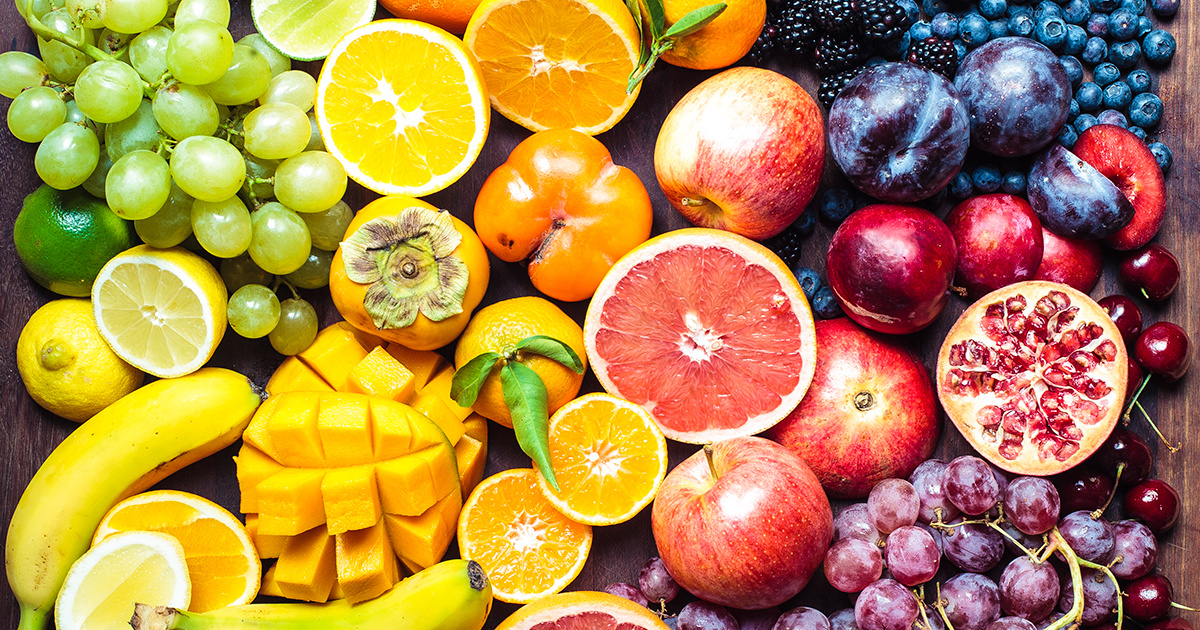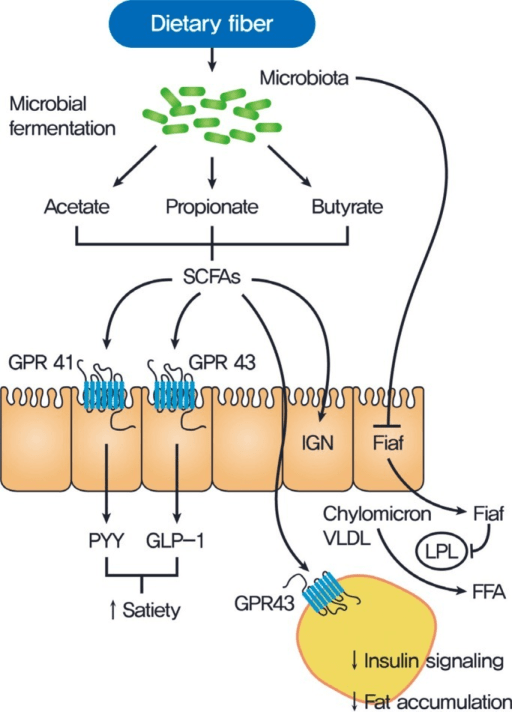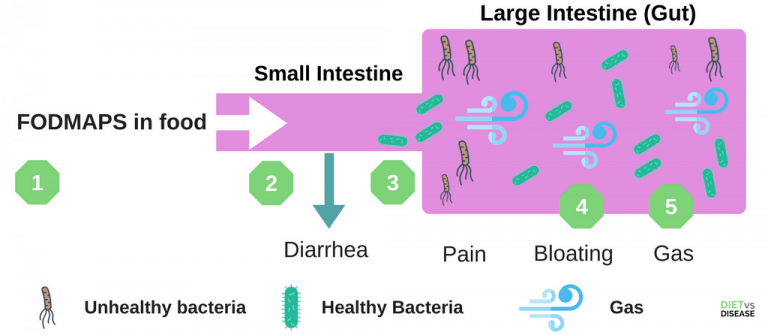
What Are Prebiotics? A Detailed Look at Prebiotic Foods and Fiber

Enrique Díaz / 7cero / Moment / Getty Images
By Kimberly Yawitz
You may have heard of probiotics, but do you know about prebiotics?
Despite the similarity in names, there are some key differences.
While probiotics rightfully get a lot of praise from health experts, prebiotics are important as well.
So, what are prebiotics, and how can you get more of them?
Keep reading to learn more about the power of prebiotics.
What Are Prebiotics?
Prebiotics are a relatively new discovery in terms of medical science.
They’re very different from probiotics, but they work closely with them.
Prebiotics vs. Probiotics
Probiotics are beneficial bacteria that have been linked with a wide range of health benefits, including (1):
- Stronger immune system
- Healthier gut
- Symptom relief from depression and anxiety
- Lower body weight
- Improved heart health
- Cancer prevention
Prebiotics are compounds in foods that feed probiotic bacteria. In doing so, they help beneficial bacteria grow and to work more effectively.
Prebiotic Fiber
All prebiotics are types of fiber (2).
Fibers resist digestion in the stomach and the small intestine. They reach the colon intact, where they’re fermented by probiotic bacteria for fuel (3).
During fermentation, prebiotics are broken down into short-chain fatty acids, like butyrate, acetate and propionate.
Some probiotic bacteria can feed off of these. However, these fatty acids are thought to have health benefits beyond feeding beneficial bacteria, including (4):
- improved gut health
- a stronger immune system
- enhanced glucose and dietary fat metabolism
- appetite control.
Bacteria in the colon feed off of prebiotic fiber to form short-chain fatty acids (24).
In short, both prebiotics and their digestive end-products are important to health.
Benefits of Prebiotics
Prebiotics are said to have several health benefits, including:
- A healthier ratio of beneficial to harmful bacteria
- Increased bone health
- Lower risk of allergies
- Reduced intestinal permeability
- A healthier immune system.
Most studies to date, though, show that these benefits aren’t from the prebiotics themselves. So far, few studies have directly linked prebiotics to positive health outcomes. Rather, they play an important supporting role by helping probiotics be more effective (5).
Summary: Prebiotics are fibers that help feed probiotics. In doing so, they increase the population of healthy bacteria and help them work more effectively.
Prebiotic Foods
Though all prebiotics are fiber, not all dietary fibers are prebiotics.
The most common prebiotic fibers include:
- Beta-Glucan
- Fructooligosaccharides
- Inulin
- Galactooligosaccharides
- Isomaltooligosaccharides
- Guar gum
- Lactulose
- Resistant Starch, including maltodextrin
- Xylooligosaccharides.
These are found in abundance in plant foods. It’s best to eat a variety of prebiotic-rich foods, in order to promote a diverse gut microbiome (5).
Here are a few types of foods that can help nourish your gut bacteria.
Root Vegetables
Onions and garlic can be added to a variety of dishes to boost intake of prebiotics. Jerusalem artichokes and leeks are delicious roasted, while jicama is great raw in salads or baked like French fries.
Human and animal studies have shown that root vegetables can positively impact the gut biome.
One study found that after 40 days pigs fed inulin or Jerusalem artichoke had higher levels of short-chain fatty acids in the colon. The Jerusalem artichoke group also saw increases in beneficial Bifidobacterium spp. bacteria (6).
Also, in one small human study, volunteers who drank juice shots fortified with inulin from Jerusalem artichoke had significantly greater increases in probiotic bacteria than those who drank plain juice (7).
Fruits
Eating fruit every day is recommended as part of a healthy and balanced diet.
Among many other health benefits, certain fruits have positive impacts on the gut biome.
Apples and bananas are particularly rich in prebiotic fibers. Apples are high in pectin, while ripe bananas contain inulin, and unripe bananas also have resistant starch.
In one small study, women who ate two medium bananas per day for 60 days saw modest increases in bifidobacteria (8).
Meanwhile, rodent studies have found that the pectin in apples increases levels of beneficial gut bacteria while decreasing harmful bacterial strains (9).
Spring Vegetables
Spring vegetables are rich in prebiotic fibers, particularly inulin, fructooligosaccharides and xylooligosaccharides (10, 11).
Examples include greens (especially dandelion greens), peas, corn, leeks and asparagus.
Greens can be used in salads, but soaking or sautéing dandelion greens can reduce their bitterness. Other spring vegetables are highly versatile and can be incorporated into a number of dishes.
Cocoa
Would it surprise you to know that chocolate can help promote a healthy gut biome?
Cocoa beans contain fibers that can be fermented by probiotics. They also contain antioxidants called polyphenols, which can help beneficial bacteria grow in the gut (12).
Animal studies and small human studies have found that cocoa powder promotes a healthy ratio of good to bad bacteria in the bowel (12, 13).
Just keep in mind that not all chocolate is created equal. Look for a dark chocolate with few additives, or stir pure cocoa powder into yogurt, smoothies, oats or baked goods.
Lentils
Lentils are legumes, which means they grow in a pod.
Prebiotic fiber content varies depending on the type of lentil. Some types are rich in resistant starches, while others are higher in fructooligosaccharides or sugar alcohols (14).
Animal studies have found that lentil-based diets promote a favorable balance of healthy to unhealthy gut bacteria. However, limited data are available in humans (15).
Nonetheless, lentils have many health benefits, and it makes sense to include them in the diet as tolerated. They’re great in soups, curries, salads or on their own.
Whole Grains
Wheat is the most abundant source of prebiotics in the Western diet (16).
Wheat and other whole grains contain various types of prebiotic fiber. For example, barley and oats are high in beta-glucan. Others contain resistant starch or other fibers.
In one small human study, consumption of 48 grams of a whole grain breakfast per day for three weeks resulted in significant increases in bifidobacteria and lactobacilli (17).
Also, in one lab study, beta-glucan from oats showed greater prebiotic activity than other prebiotic foods, including corn and sugar beets (18).
You can maximize the prebiotic benefit by experimenting with a variety of whole grains. Whole wheat bread, rice and pasta are great, but don’t overlook less popular grains like barley, rye, farro and quinoa.
Nuts
Most nuts and seeds contain some prebiotic fiber, though walnuts are among the richest sources.
In one human study with 135 healthy adult volunteers, daily walnut consumption positively altered the gut biome by significantly increasing the abundance of Ruminococcaceae and Bifidobacteria, and significantly decreasing levels of Clostridium sp. bacteria.
Volunteers in this study ate 43 grams per day (a little over 1/3 cup chopped) of walnuts. Participants reduced calories from fat or carbohydrates due to the high calorie content of walnuts (19).
Summary: The best way to consume adequate prebiotic fibers is to eat a variety of plant foods. Aim for 5-9 servings of fruits and vegetables per day and round out your plate with whole grains, legumes and nuts. Feel free to indulge in pure cocoa for dessert.
Prebiotic Supplements
There’s a growing market for prebiotic supplements with sales expected to reach $7.5 billion by 2023 (5).
A large selection of prebiotic supplements are available online, many of which contain inulin as an active ingredient. Some popular ones include:
- Dr. Tobias GutMeiser Ultimate Prebiotic
- Prebio Thrive
- Biohm Super Greens
- Uplift Food Daily Uplifter.
Unfortunately, few studies have specifically examined prebiotic supplements. Most have focused on animals or human infants, while others have looked at synbiotic supplements, which include both prebiotics and probiotics (20).
These supplements are probably safe for most adults, but we don’t know enough to say if they’re effective (21).
Summary: Prebiotic supplements have been very popular, and many options are available online. The research hasn’t caught up to the demand yet, at least in human adults. While they won’t likely harm you, there’s not enough evidence to say if they work.
Are Prebiotics Right for Everyone?
Prebiotics are safe for most people.
However, some people with irritable bowel syndrome or other digestive issues are intolerant to certain prebiotic fibers. This is because many prebiotics are high in FODMAPs.
FODMAPs are fibers that undergo fermentation in the colon, just like prebiotics. In fact, certain prebiotic foods are also high in FODMAPs.
Reaction to FODMAPs in the gut.
Some people are especially sensitive to FODMAPs and experience pain, bloating, gas, diarrhea and abdominal distention when they eat high-FODMAP foods.
A diet that temporarily restricts foods high in FODMAPs may be helpful for people who frequently experience this type of discomfort (22).
That’s not to say that you should give up prebiotics altogether, though. Doing so alters the composition of beneficial gut bacteria, many of which lower gastrointestinal distress.
Even on a FODMAP elimination diet, prebiotic foods that are high in FODMAPs should be reintroduced gradually as tolerated (23).
A free 7-day low-FODMAP starter plan is available here.
Summary: Some prebiotic fibers are high in FODMAPs, which can cause gastrointestinal issues in people who are sensitive. A diet that temporarily restricts then reintroduces high-FODMAP foods may be helpful. The reintroduction phase is important, because unnecessarily restricting prebiotic foods will limit the effectiveness of gut-friendly probiotics.
Some Final Thoughts on Prebiotics
No studies to date have directly linked prebiotics to positive health outcomes.
But that’s not to diminish their importance. Prebiotics feed probiotics and allow them to work more effectively.
As such, they play a secondary role in many important bodily functions.
There are many supplements on the market, but research hasn’t caught up to consumer demand.
For now, the best way to obtain prebiotics is to eat a diet with a wide variety of fibrous plant foods.
Do your best to incorporate whole grains, root vegetables, spring vegetables (when available), fruits, legumes and nuts.
A bit of high-quality dark chocolate won’t hurt, either.
Reposted with permission from our media associate Diet vs Disease.
- 8 Science-Based Benefits of CBD Oil
- Health Benefits of Fasting: Splitting Fact From Fiction
- Flexitarian Diet: Your Starter's Guide and Sample Diet Plan
- Cannabis Oil vs. CBD Oil: Health Benefits and Legal Considerations

 233k
233k  41k
41k  Subscribe
Subscribe 

